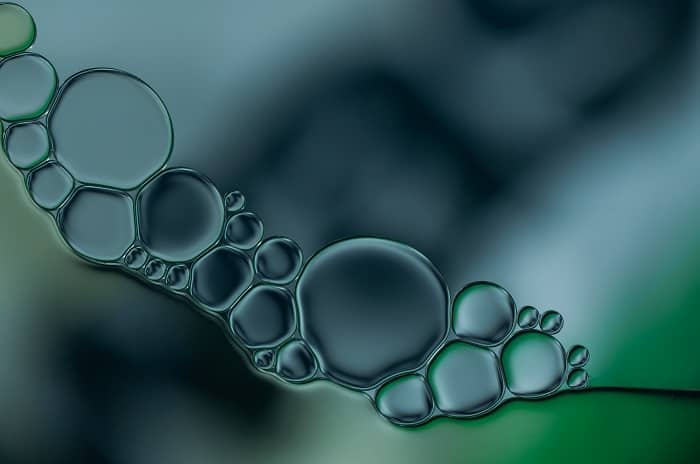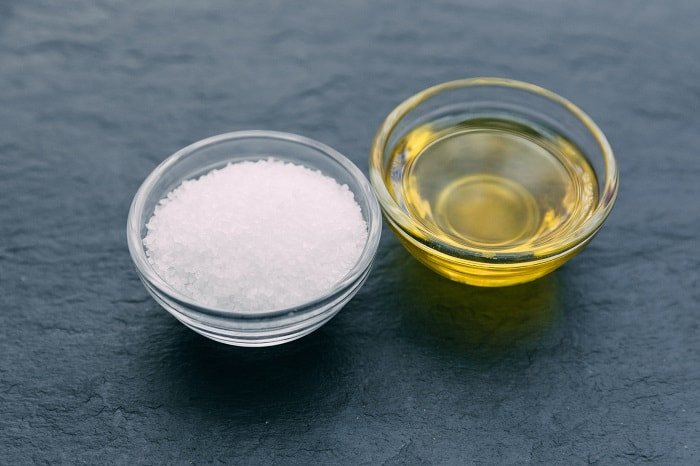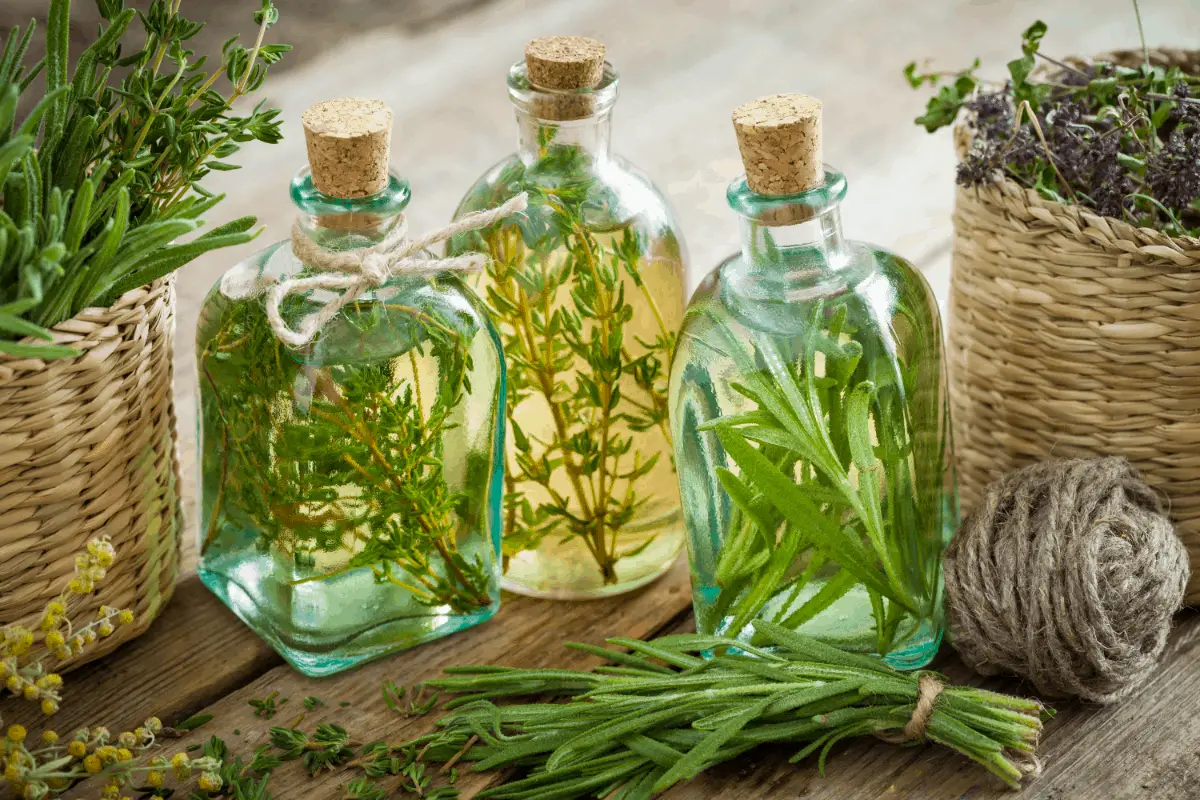Last Updated on October 10, 2024
If you’ve ever tried to mix oil and water before, you will notice that they do not go well together. Most times, the oil sits on top of the water, and you can tell the difference. So since oil is not soluble in water, how then can you mix your essential oils with water?
Making essential oil solution is possible, and you don’t need to dilute in an excess carrier oil before adding water. Apart from water and carrier oil, you can also make use of a solubilizer to titrate your essential oil.
There are reasons why you may want to emulsify your essential oil. The major reason why you need to emulsify your essential oil is to make your favorite home remedy. If you truly want your essential oil solution to work, then you need the ingredients to mix properly.
Experts advise that you don’t make of use essential oils for topical application on the skin without first diluting it. An undiluted essential oil can cause skin irritation and phototoxicity; this is why you need to ensure that all essential oils are properly mixed before adding them directly to your skin.
Before using essential oil in a water-based medium, it needs to be emulsified.
Table of Contents
What is an Emulsifier?
An emulsifier is a substance that mixes oil and water or better yet tries to mix oil and water. You already know that oil and water don’t blend. If you continue to shake and stir oil and water together in a bowl, they will not result in a perfect mix. You will still be able to separate the oil from the water once you stop stirring.
Adding an emulsifier to the mix helps to separate the oil particles into the water. Although they mostly won’t blend, you can easily lift both materials by introducing an emulsifier.
Why Should You Emulsify Essential Oils?
We are all familiar with some of the many benefits of essential oils, but not so many of us are aware that essential oils also have their downsides.
Applying them directly to your skin or ingesting it can have severe consequences on your skin and health. Some of the common dangers associated with essential oil use include
-
Skin Burns
This is the most common symptom associated with applying essential oil directly to the skin. Essential oils are indeed obtained as a byproduct of flowering plants, but they contain chemical compounds that can result in skin complications, especially when applied in excess.
-
Dispensing Inaccuracy
When your essential oils are not properly emulsified, it makes it difficult to dispense. With the oil and water separated in the essential oil dispenser, it can be a hard task to determine which of the two liquid is been dispensed. You can be applying water to your skin instead of essential oil, you never can tell.

Best Emulsifier to Use
You may be asking what is the best emulsifier to use when mixing essential oil and water. The thing is that you want to choose one that does not contain any toxic substances.
There are many emulsifiers in the market to choose from, so you want to be on the lookout for the ones that are free from chemicals. Check the ingredients to see that it does not contain any toxins that could ruin your essential oil or worse, affect you negatively.
You should select your emulsifier based on what you are making. You are free to choose from any of the emulsifiers below, but I find alcohol and Castille to be better options compared to the rest.
- Aloe Vera Gel
- Gelatin
- Honey
- Fat
- Polysorbate 20
When preparing essential oil for use as a skincare product, you may want to consider adding polysorbate 20 first before introducing the water-based ingredient.
How to Mix Essential Oil With Water
You should avoid mixing essential oil and water directly. Instead, you should settle the oil in an emulsifier such as Castille soap. Leave the mix for a few hours to see if they blend. If you are still able to separate the oil from the Castille, then you should try adding in some alcohol. Avoid using weak alcohol, or diluted alcohol when including it in essential oil.

You also want to avoid using too much water, this can affect the effectiveness of the essential oil. It is that the essential oil and water-based ingredient are in the right proportion. Normally, you want to add a few drops of essential oil to 100ml of water. The more water, the more drops of essential oil you need to use. As for the emulsifier, you can balance it with the same amount of water.
When to Use an Emulsifier
It is not a must you use an emulsifier with your essential oil, but you need to as long as you are going to apply it directly to your skin. If you need to make an aromatherapy spray, cream, and lotion, you surely need an emulsifier to help blend the essential oil.
You do not need an emulsifier when making an essential oil and carrier oil blend. You can also skip it when blending essential oil with a nonwater-based liquid such as fat.
Common Household Products That Don’t Mix with Essential Oil
It is often common to want to include ingredients in your essential oil mix to improve the aroma or flavor of the recipe. You should go for a more natural scent and avoid using artificial fragrances. If you want your essential oil to have a lemon scent, you should use fresh lemons instead of artificial scents.
Some of the common ingredients that do not mix well with essential oil include
- baking soda
- salts
- witch hazel

Mixing any of these ingredients with essential oil without an emulsifier will result in a poor mix. In most cases, they mix temporarily; and once the solution settles, the ingredients go their separate way.
The amount of emulsifier you will need to add to an essential oil depends on the type of oil. Some oils will need a little amount of emulsifier while others will need more. You can begin with a ratio of 1:1 and then increase your ratio until you are satisfied with the outcome.
How to Mix Essential Oils with Water for Reed Diffusers?
Have a reed diffuser and would like to mix essential oils with water? It will be easy-peasy, here’s everything you need to know:
Instruments & Supplies:
- A clean container with a narrow neck. Make sure it is the right size to fit the reeds.
- Water, distilled or purified
- Essential oils of your choice
- A measuring spoon or dropper
Instructions:
- Half-fill the container with water.
- Add the essential oils to the water. We recommend that you add roughly 10-15 drops of essential oils for every 1 ounce (30 mL) of water. However, don’t hesitate, on the contrary, you should feel free to adjust the ratio to your preference.
- Combine the essential oils with water. To gently stir the mixture, use a spoon or stir stick. Place the reeds in the container. The fragrant oil and water mixture will be absorbed by the reeds, which will then diffuse the aroma into the air.
You can adjust the intensity of the scent by adding more or fewer essential oils to the water, or by using more or fewer reeds, whatever makes you happy. It is always a smart idea to start with a smaller amount of essential oils and gradually increase the amount until you discover the ideal balance for you.
How Do You Make Floral Water With Essential Oils?
Here are the quick instructions for making floral water with essential oils:
Ingredients & Supplies:
- A clean spray bottle.
- Water, distilled or purified
- Essential oils of your choice
- Dried flowers or fresh petals of your choice
Instructions:
- Fill the spray bottle about halfway with water. We recommend using the distilled or purified one because there is a high probability that your tap water contains impurities that can affect the scent and integrity of the essential oils.
- Add a few drops of one or more types of essential oils. Feel free to use the general rule that we described above – 10-15 drops of essential oils for every 1 ounce (30 mL) of water.
- Add a small handful of dried flowers or fresh petals to the water.
- Close the bottle and shake it to combine the ingredients.
- Leave the mixture for several hours so that the scent enhances in the water.
Don’t forget to put a label on the bottle so you can always be sure of what’s inside and when it was made. Use as needed as a natural room spray, body mist, facial toner, or as a refreshing facial mist on hot summer days.
How Do You Make Lavender Oil With Water?
There is no better method to make lavender oil with water than with steam distillation. Here’s a simple recipe you can follow:
Ingredients & Supplies:
- Fresh lavender flowers
- Distilled water
- A large pot or cauldron
- A heat-safe glass jar
- A metal bowl or colander
- Ice
Instructions:
- Fill a large pot or cauldron with water and be sure to boil it.
- Then, gently place the metal bowl or colander in the pot, however, it is strictly necessary to make sure it is not touching the bottom.
- Add a generous amount of fresh lavender flowers.
- Place the jar on top of the bowl or colander.
- Place a few ice cubes on top of the glass jar.
- As the water boils, steam will rise and pass through the lavender flowers, which will eventually result in the release of fragrant essential oils into the jar. A very interesting process, isn’t it? Allow the steam distillation process to run for approximately an hour, or until all the water in the pot has evaporated.
- Once the process is complete, carefully remove the glass jar from the bowl or colander, whatever you used. It is very important to let the oil cool completely, and only then strain out any plant matter using a fine mesh strainer or cheesecloth.
- Put the precious lavender oil in a clean, hermetically sealed container and keep it in a cool, dark place.
How Do You Make Perfume With Essential Oils And Water?
This is all you need to know about making your perfume from what can be called common household items:
Ingredients & Supplies:
- Essential oils of your choice
- Water
- A spray bottle
- A bowl
- A spoon or stirrer
Instructions:
- Grab a clean mixing bowl and mix in a few drops of each essential oil you want to use, we always favor lavender, jasmine, or peppermint, but don’t be shy. We even recommend experimenting with different combinations and quantities to find a scent that you like.
- Add a teaspoon of water to the mixing bowl and stir to combine all the ingredients.
- Pour the fragrant liquid into the spray bottle and shake thoroughly to mix the oils and water.
How Do You Mix Essential Oils With Water For Hair Growth?
There are several ways to mix essential oils with water for hair growth, and these are our favorite options that we wholeheartedly recommend:
- Hair Growth Spray: In a spray bottle, combine a few drops of essential oils believed to encourage hair growth, such as rosemary, peppermint, or cedarwood, with a cup of water.
- Hair Growth Oil: Mix a few drops of essential oils with a carrier oil, you won’t go wrong if it is coconut or almond oil, and massage your scalp for a few minutes. This oil treatment can be used daily or as needed.
- Hair Growth Mask: Combine a few drops of essential oils with a hair mask or deep conditioning treatment and massage into the scalp and the entire length of hair. Allow it to do its magic for 15-20 minutes before rinsing.
How to Mix Essential Oils with Water for Room Spray?
Here’s everything you need to know about making a healthy room spray:
Ingredients & Supplies:
- Essential oils of your choice
- Water
- A spray bottle
- A bowl
- A spoon or stirrer
Instructions:
- In a mixing bowl, mix a few drops of each essential oil you want to use. Essential oils of lavender, eucalyptus, and lemon proved to be the best for this purpose.
- Stir in a teaspoon of water to blend the oils and water in the mixing bowl.
- Pour the mixture into the tiny spray bottle and shake well to combine all of the ingredients.
- Spray the room spray in the air to scent your home or car. It may also be used to refresh linens or curtains.

Lacey is an environmental enthusiast and passionate advocate for living green and sustainable. She believes that everyone can make a difference, no matter how small. Lacey is dedicated to reducing her own carbon footprint and educating others on the importance of living greener. She is an advocate for green energy and sustainable practices. She is an active member of her local community, volunteering with local conservation efforts, and taking part in sustainability initiatives. Lacey is a firm believer that the only way to ensure a sustainable future is to work together and make small, but important changes.

